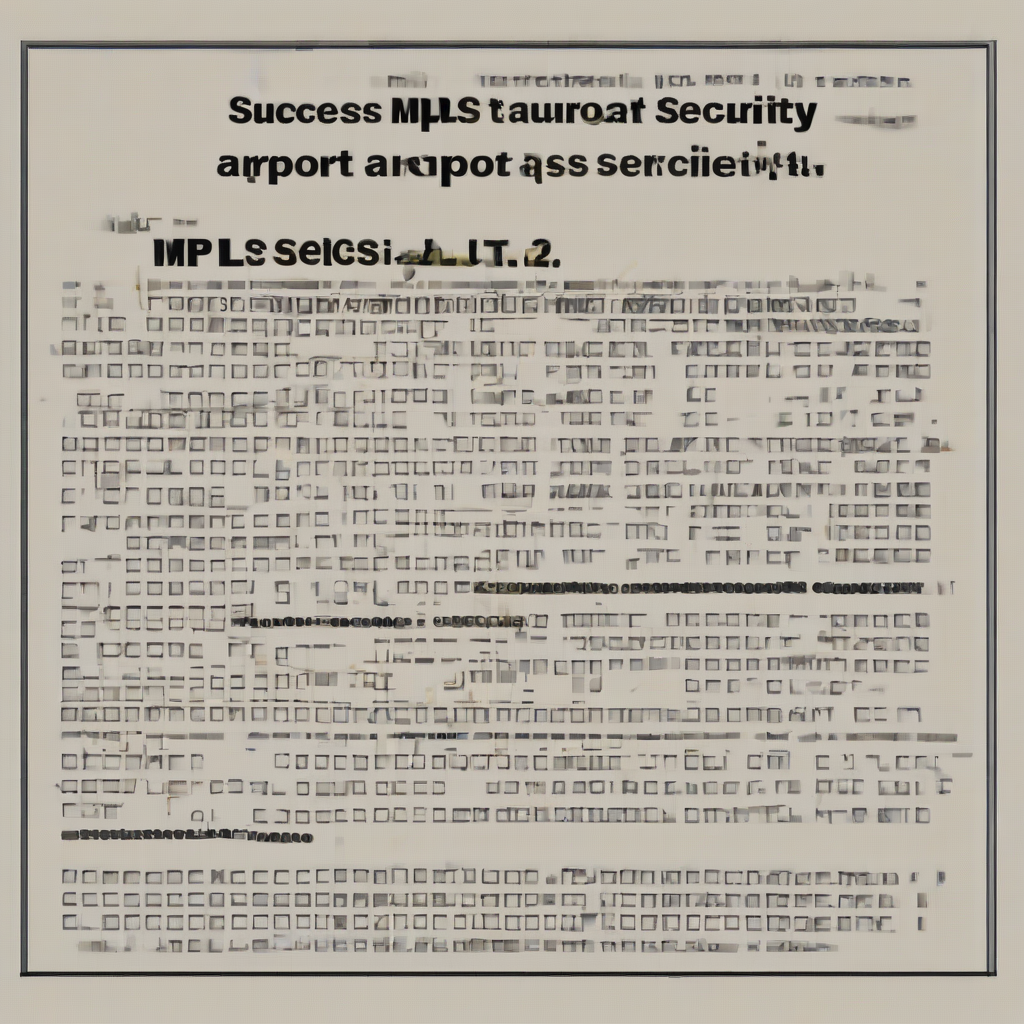Navigating the Labyrinth: A Comprehensive Guide to MPLS Airport Security
Minneapolis-St. Paul International Airport (MSP) is a major hub, serving millions of passengers annually. Understanding its security protocols is crucial for a smooth and stress-free travel experience. This guide delves into the intricacies of MSP airport security, offering comprehensive information for both first-time and frequent flyers.
Pre-Security Preparations: Setting the Stage for a Smooth Journey
- Check-in Procedures: Familiarize yourself with your airline’s check-in process, whether online, at a kiosk, or at a counter. Allow ample time, especially during peak travel periods.
- TSA PreCheck/Global Entry: Consider enrolling in TSA PreCheck or Global Entry to expedite the security screening process. These programs offer faster lanes and reduced screening requirements.
- Packing Smart: Pack your carry-on and checked bags strategically. Familiarize yourself with TSA’s 3-1-1 liquids rule and prohibited items list. Proper packing minimizes delays at security checkpoints.
- What to Wear: Choose comfortable clothing and shoes that are easy to remove for security screening. Avoid metallic embellishments that might trigger alarms.
- Accessible Passengers: Passengers with disabilities or special needs should contact their airline and TSA Cares in advance to arrange for assistance during the security screening process.
- Identification: Ensure you have a valid government-issued photo ID, such as a driver’s license or passport, readily available.
The Security Checkpoint: A Step-by-Step Guide
The security checkpoint at MSP is designed to ensure passenger safety and efficient flow. Understanding the process can alleviate anxiety and expedite your journey.
- Proceed to the Correct Checkpoint: Follow signage and announcements to locate the appropriate security checkpoint for your departing flight. Consider using the TSA PreCheck lane if eligible.
- Remove Items: Remove laptops, tablets, and large electronics from your carry-on bag and place them in a separate bin for X-ray screening.
- Liquids and Gels: Ensure your liquids, gels, aerosols, and creams are in 3.4-ounce (100ml) containers or less, placed within a single, quart-sized, clear, resealable plastic bag. This is crucial for efficient screening.
- Shoes and Belts: Remove your shoes and belt before placing your belongings in the screening bins. Metal detectors will be used for security screening.
- Carry-on Baggage Screening: Place your carry-on baggage on the conveyor belt for X-ray screening. Follow any instructions given by TSA officers.
- Walk Through the Metal Detector/Advanced Imaging Technology (AIT): Walk through the metal detector or undergo AIT scanning. If an alarm sounds, you will be subject to further screening.
- Retrieval of Belongings: Retrieve your belongings from the bins and proceed to your gate.
Understanding TSA Procedures and Regulations
The Transportation Security Administration (TSA) is responsible for security at MSP and all U.S. airports. Understanding their procedures and regulations is paramount.
- Prohibited Items: Familiarize yourself with the list of prohibited items, including weapons, explosives, and certain liquids. Attempting to bring prohibited items through security can lead to significant delays and penalties.
- Random Security Checks: Be prepared for random security checks. TSA officers may select passengers for additional screening without prior notice. Cooperation is essential.
- TSA Cares: For passengers with disabilities or special needs, TSA Cares provides assistance and support before, during, and after the security screening process. Contact them in advance to arrange for assistance.
- Passenger Support: TSA offers various support services, including information on prohibited items, travel tips, and assistance for passengers with disabilities. Utilize these resources for a more informed travel experience.
- Reporting Security Concerns: If you observe any suspicious activity or have security concerns, immediately report them to a TSA officer or airport authority.
Navigating MSP Airport’s Unique Security Features
MSP has specific features that passengers should be aware of to navigate security effectively.
- Multiple Checkpoints: MSP has numerous security checkpoints distributed throughout the terminals. Consult airport maps and signage to identify the closest checkpoint to your gate.
- Checkpoint Wait Times: Real-time checkpoint wait times are often available on the MSP website and mobile app. Checking wait times can help passengers plan their arrival time.
- Technology Enhancements: MSP utilizes advanced technologies, such as Computed Tomography (CT) scanners, to improve security screening efficiency and reduce wait times.
- Passenger Assistance: Airport staff is readily available to assist passengers with any security-related questions or concerns.
Beyond the Checkpoint: Ensuring a Safe Journey
Security measures extend beyond the checkpoint. Maintaining awareness and following guidelines throughout your journey is crucial.
- Gate Procedures: Familiarize yourself with your airline’s boarding procedures and follow instructions from gate agents.
- In-flight Security: Be aware of in-flight security protocols and cooperate with crew members’ instructions.
- Lost and Found: Report any lost or stolen items to airport security or the appropriate authorities.
Addressing Security Concerns and Incidents
While MSP strives for a secure environment, occasional incidents may occur. Understanding how to handle such situations is important.
- Emergency Procedures: Familiarize yourself with emergency procedures and evacuation routes within the airport. Follow instructions from airport staff during emergencies.
- Reporting Security Breaches: Report any suspected security breaches or suspicious activities to the appropriate authorities immediately.
- Responding to Delays: Be prepared for potential delays and have backup plans in case of unforeseen circumstances.
Conclusion (Omitted as per instructions)
